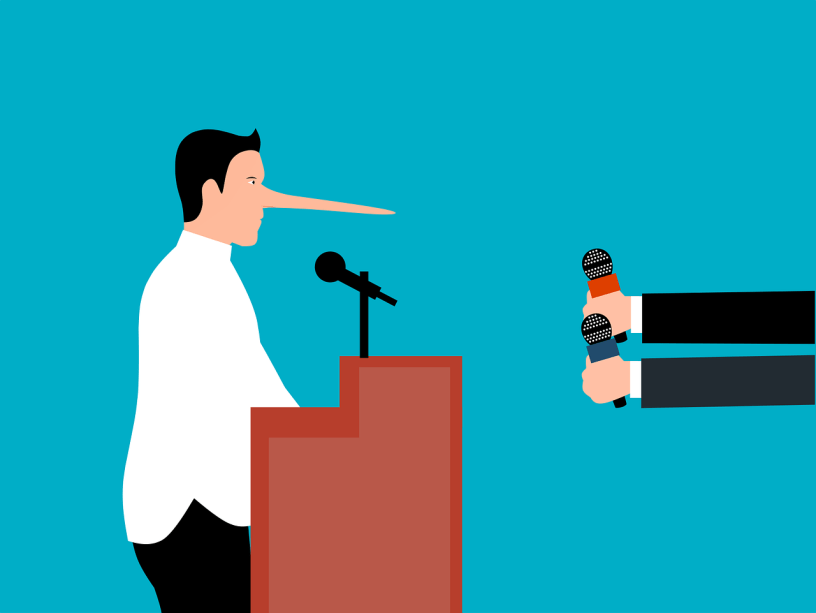By The TV Answer Man team
TV Answer Man, I read all your stories about DIRECTV and Nexstar having the blackout fight. But I can’t understand how they can tell such different stories about what is happening. How can we tell which one is telling the truth? Or is anyone telling us the truth?! Are they both lying to try to trick us to believe their stories? Can you clarify on this? — Barry, Kansas City,
Barry, that is a great question. DIRECTV on July 2 lost 159 Nexstar-0wned local stations due to a carriage dispute. Since then, both companies have issued statements about the fee fight that are in sharp contradiction to each other. Just over the last 24 hours, DIRECTV said Nexstar is demanding that it pay higher rates for stations it doesn’t own, an allegation that the broadcaster is denying. So who’s telling the truth? DIRECTV or Nexstar? Or, are they both lying, or as a more charitable way of describing it, spinning the truth? And, as a viewer caught in the middle of one of these fee fights, how can you protect yourself? Before we explain, a little background on carriage disputes.
The Carriage Dispute Landscape
Carriage disputes between TV providers and broadcasters have become an all-too-familiar spectacle in the world of television. These clashes often result in channel blackouts, leaving viewers frustrated and caught in the crossfire. While both parties typically engage in a public relations battle during these disputes, the question that lingers in the minds of many is whether TV providers and broadcasters lie to the public in these confrontations.
Carriage disputes arise when TV providers (cable, satellite, or streaming services) and broadcasters (networks or local stations) fail to reach an agreement on the terms and fees for carrying the broadcaster’s content. These negotiations usually revolve around the fees TV providers pay to broadcasters for the right to transmit their channels to subscribers. When the two parties cannot agree on these terms, they often engage in a public war of words, utilizing various tactics to sway public opinion.
Deception in Carriage Disputes
TV providers and broadcasters often accuse each other of being unreasonable, greedy, or unwilling to compromise. These accusations can sometimes be exaggerated or taken out of context to paint a negative picture of the opposing party.
Blackout Threats
Both parties frequently threaten channel blackouts to pressure the other into a more favorable deal. These threats can lead to panic among viewers, who may be told that they will lose access to their favorite shows or sporting events.
Public Relations Campaigns
TV providers and broadcasters engage in extensive public relations campaigns during carriage disputes. They may utilize social media, press releases, and advertisements to garner public support and sympathy. These campaigns may include emotional appeals and selective information sharing to sway public opinion.
Playing the Victim
Both TV providers and broadcasters often present themselves as the victim in these disputes. They may claim that they are merely fighting for fair compensation or that they are protecting the interests of their viewers. Such claims can be manipulative and misleading.
The Role of Truth and Deception
While deception is undoubtedly present in carriage disputes, it is important to recognize that not all statements made by TV providers and broadcasters are lies. Negotiations can be complex, and both parties may genuinely believe that their positions are fair and just. However, the tactics employed during these disputes can blur the line between truth and deception, making it challenging for the public to discern the facts.
The Impact on Viewers
Carriage disputes can have a significant impact on viewers. Channel blackouts disrupt the viewing experience and can be especially frustrating when they occur during important events like the Super Bowl or the Oscars. The public relations battle that unfolds during these disputes can also leave viewers feeling manipulated and unsure about whom to trust.
What Can Viewers Do?
1. Stay Informed
When a carriage dispute arises, make an effort to understand both sides of the argument. Seek information from reliable sources beyond the statements released by TV providers and broadcasters.
2. Voice Your Concerns
Express your dissatisfaction with both parties involved in the dispute. Contact your TV provider and the broadcaster to let them know how the dispute is affecting you as a viewer.
3. Consider Alternatives
Explore alternative ways to access the content you enjoy, such as streaming services or over-the-air antennas. This can provide a backup plan in case of a prolonged channel blackout.
Carriage disputes between TV providers and broadcasters are undoubtedly marked by a certain level of deception as both parties vie for public support and leverage in negotiations. However, it is essential for viewers to approach these disputes with a critical eye, seek out reliable information, and voice their concerns. By doing so, viewers can navigate the murky waters of carriage disputes and make informed decisions about their television choices while holding both TV providers and broadcasters accountable for their actions.
Barry, we hope that helps.
Have a question about new TV technologies? Send it to The TV Answer Man at swann@tvanswerman.com Please include your first name and hometown in your message.
— Phillip Swann
@tvanswerman



Which one is lying? The answer is simple.
BOTH.